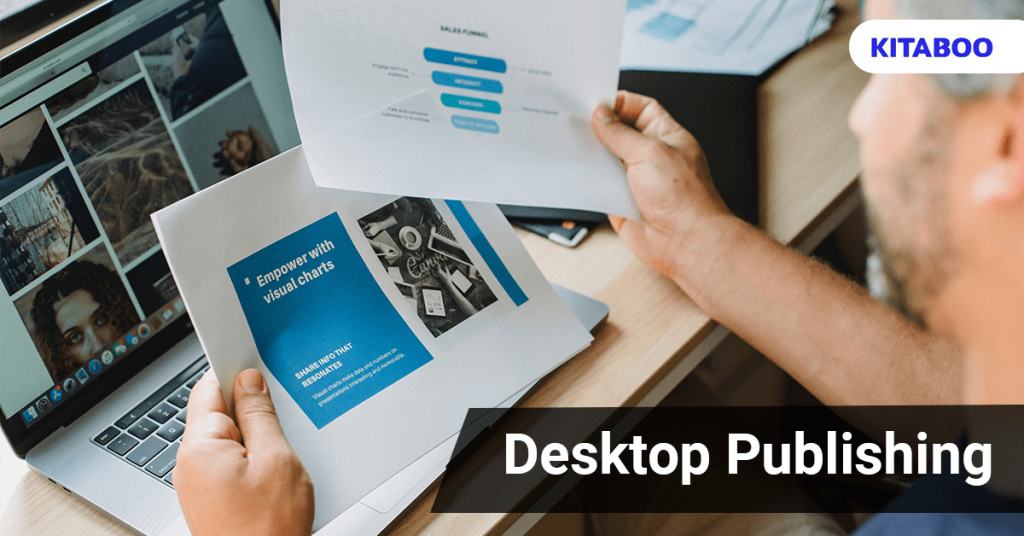
Desktop Publishing: Definition, Uses, and More
Did you know that Adobe Illustrator and Microsoft Publisher are actually desktop publishing (DTP) software? Desktop publishing has proven to be a boon, assisting students, businesses, media houses, and almost every person with a computer in creating stunning documents.
Let’s understand in detail what it’s all about.
What is Desktop Publishing?
Although it may sound excessively complicated; in reality, it’s quite simple.
The process of creating a document on a software before it can be printed is called desktop publishing. One of its major purposes is to allow a person to visually design the document before printing it, making the document more interesting for the reader.
For example, if you wanted to print an invitation to a birthday party, you could first create a digital draft via software. Once this is done, you could proceed to print. With that, you would have just done desktop publishing!
The interesting thing is that compared to word processing, as with MS Word, DTP allows you to be visually creative with the elements that you wish to print. You can add images, vectors, shapes, colors, etc., to the document as well.
What Are the Uses of Desktop Publishing?
DTP assists various industries (like print media) with a multitude of operations while saving significant amounts of time and effort. Five of the major use cases for various industries that use such software are discussed below.
Translation Industry
Every language has its own script. And every script has its own punctuation, format, alignment, spacing, characters, etc. Amidst translated documents, a lot of this detail is either lost or scrambled.
Using a DTP software, translators can get the documents to look and read just like the originals.
Marketing Industry
The scope of marketers has now expanded into creating content for advertisements across media such as flyers, hoardings, digital communications, email etc. This is where DTP software comes in handy.
Modern DTP software isn’t complicated to use, allowing for even the unpractised hand to create stunning visuals.
Education Industry
Perhaps the most significant example of desktop publishing in the education industry is the use of PowerPoint presentations.
This is also software (Canva is another example) that allows the user to present information in a graphical, engaging manner. Students can leverage DTP software to express their ideas alongside rich media.
Business and Corporate
If you’ve ever applied for a job with a corporation or a business, you might have mentioned ‘MS Office’ as one of your skills. Knowing your way around basic DTP software has become a commonplace skillset in the business domain today.
Every employee needs to fulfill a multitude of functions, which can be handled by knowing how to use DTP software.
Graphic Design
The most obvious use case of DTP software is with graphic design – whether it’s used by publishing houses, advertising agencies or even by individuals.
Software like Adobe Illustrator, Microsoft Publisher, etc., are used extensively to create documents with enriched elements for printing.
What Are the Advantages of Desktop Publishing?
Clearly, a lot of people use DTP software even unknowingly. The question that then arises is what makes it so popular?
DTP offers multiple benefits across various industries and users. Here are six major advantages.
Versatility
DTP software provides a more versatile, flexible way to design documents that need to be printed as compared to a word processor.
Today, readers seem to interact better with documents that have visual content alongside text. With DTP software, one has the choice to incorporate rich media, charts, graphics, and other elements into the document, which is not possible with just a word processor.
Editability
One of the biggest advantages of a desktop publishing software is the ability to move and edit elements of a document with minimum effort.
Some software allow users to modify elements in the document frame-wise, helping with alignment and selective editing. This functionality is extremely convenient for quick fixes.
Imports
DTP software makes it extremely easy to import media files from other sources into the document.
Consider the example of Adobe Photoshop, with the ‘Embed’ option in the File menu. With this option a user can easily insert media from external sources into the canvas. One can also import text, graphics, vectors, and other compatible files.
WYSIWYG
Short for ‘What You See Is What You Get’, DTP software enables you to create documents that closely resemble what they would look like on paper.
There may be some color variations depending on the printer, screen resolution and quality – ink & paper. However, what you see on the screen is what you would get on paper.
This function makes it easier for those without a technical background to create art work.
Auto-Restructuring
Most often, DTP software tend to use the auto-restructuring feature.
This is when, if an element from the canvas (area where the file is being created) is moved to a new position, the software automatically aligns it in respect to every other element on the canvas.
This function saves a considerable amount of time and effort for the creator.
Typesetting
With so much focus on design, it’s easy to forget about text while using a DTP software. Yet these software allow users to work with type just as easily.From letter spacing to line spacing or font choices to font effects, desktop publishing gives you a host of features that make your text more readable and aesthetic.
Are There Any Disadvantages of Desktop Publishing?
The disadvantages of desktop publishing aren’t many, but the few there are may pose a challenge to some businesses.
Not Budget-Friendly
Good, popular and highly functional DTP software usually end up being expensive.
While freemium versions are available, they significantly stifle the software’s functionality by limiting the number of uses, the time of use, or the features available.
May Not Be Scalable
DTP software is usually meant for use by an individual creator or at the most a small team of creators. It is generally extremely difficult to scale such software to an enterprise level.
This may pose a challenge if a company decides to ramp up production and needs more output.
Wrapping Up
As you can see, desktop publishing is now an everyday matter for the world. Every individual – whether a salaryman or a student – has, at some point, used a DTP software.
At the same time, we all realize that print is no longer as popular. The trend in DTP seems to be moving towards the use of DTP features to create digital-first content. That’s where KITABOO steps in.
KITABOO is a digital publishing platform that uses cutting-edge, flexible DTP features to create interactive and engaging educational eBooks at scale.
To know more, write to us at contact@kitaboo.com.
Suggested Reads:
- What are Interactive eBooks and How to Create Them?
- 4 Best Ways To Use Technology in Teaching the Next Generation
- Benefits of Using SDKs in Improving the User Experience of Educational Software
- Top Benefits of Creating An eBook Store for Your Publishing Business
- 8 Best Interactive e-learning Softwares For Online Business
Discover how a mobile-first training platform can help your organization.
KITABOO is a cloud-based platform to create, deliver & track mobile-first interactive training content.


